This was published 8 years ago
Lake Nicaragua: The ultimate chill-out spot in Central America
By Ute Junker
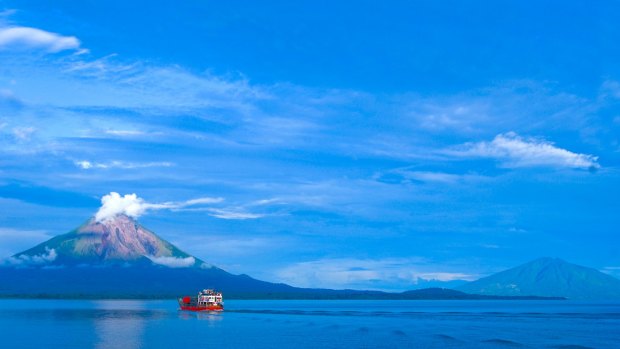
Ometepe volcano on Lake Nicaragua.
It is possible that, somewhere in the world, someone at this moment is feeling more relaxed than I am. However, I rather doubt it. Soothed by the sun-warmed planks of a floating platform beneath my back, lulled by the oh-so-gentle rocking caused by breeze-blown ripples scudding across the surface of the lake, I finally know what it feels like to be adrift on a sea of bliss. Beyond the lake's gentle lapping, the only sounds I hear are the wingbeats of a passing heron and, in the far distance, the splash of some oars. Otherwise, I am utterly alone.
Floating in my splendid solitude, the comforts of civilisation are nevertheless close at hand. When I slip back into the clear water, it takes just a few strokes to reach the shore of the small island that is my temporary home. My lodgings, Jicaro Island Ecolodge, are as boutique as it gets: just nine two-storey casitas, made of gleaming hardwood, studded with huge picture windows through which to admire the ever-shifting moods of the lake.
The lake is what drew me here. Lake Nicaragua is not just any body of water. Covering more than 8000 square kilometres, it is the largest lake in Central America, seeming more like an ocean to those standing on its shore. More than 400 islands are scattered across its surface, including the mighty Ometepe, a majestic mass from which two volcanoes rise proudly to the sky.
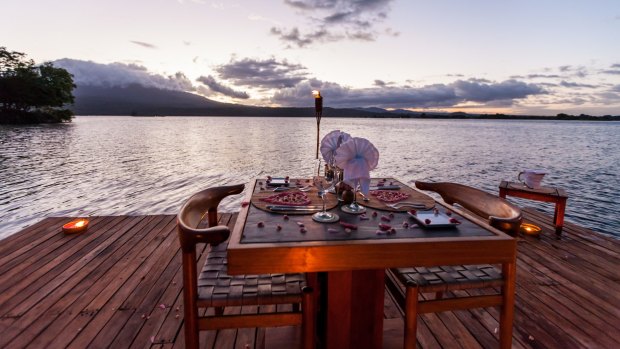
Jicaro Eco Lodge dining.Credit: Teri K. Miller
In my quiet corner of the lake, near the north-western shore, islands lie in particularly thick profusion: 350 of them, scattered like marbles abandoned by distracted children. Some are little more than boulders, other are large enough to hold a clutch of houses. The islets are actually relics of an ancient cataclysm, chunks of the cone of the nearby Mombacho volcano, which blew off during a mighty explosion 20,000 years ago and landed in the lake.
Most of the islets are uninhabited, nesting places for herons, egrets and kingfishers. Others are home to local fishermen who head out in their rowboats with the twilight, ready for the night's work. In this peaceful spot, the rest of the world feels very far away.
In fact, just a 10-minute motorboat ride from Jicaro brings you to the lakeshore and the city of Granada, Nicaragua's most popular tourist destination. The oldest colonial city in the mainland Americas, Granada has pretty pastel streetscapes, cobblestones and horse-drawn carriages. The grand buildings with their verdant courtyard gardens attest to a time when this was one of the wealthiest cities in the Americas, the transit point from which much of the New World gold was shipped back to Spain.
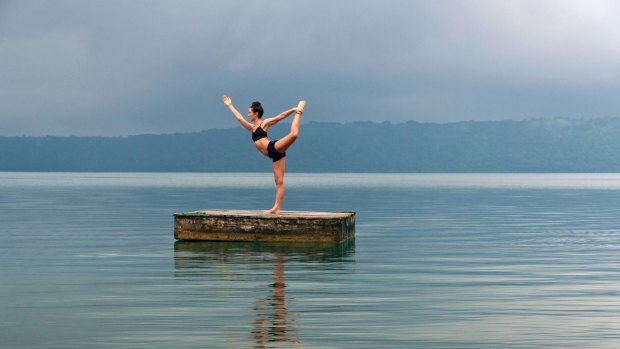
Lake Nicaragua is the largest lake in Central America and a perfect place for relaxation.Credit: Alamy
Not all the gold made it back. Pirates prowled Lake Nicaragua, seizing booty and even sacking and burning the city on several occasions. Reading the exploits of notorious buccaneers such as Welshman Henry Morgan – whose first raid on Granada netted treasure worth half a million sterling silver pounds – is a reminder that this lake wasn't always tranquil.
My day in Granada inspires me to explore further along the shore. As well as kayaking and fishing tours, Jicaro offers a number of land-based excursions. One takes in the handicraft centres of Masaya and San Juan de Oriente; another takes guests up the nearby Mombacho volcano, towering 1300 metres above the lake.
The journey up the volcano's steep flanks takes us through plantations of citrus and coffee, cacao and plantain. Although many of Nicaragua's volcanoes are active, Mombacho has been dormant for 500 years, and its four craters are now shrouded in lush cloud forest.
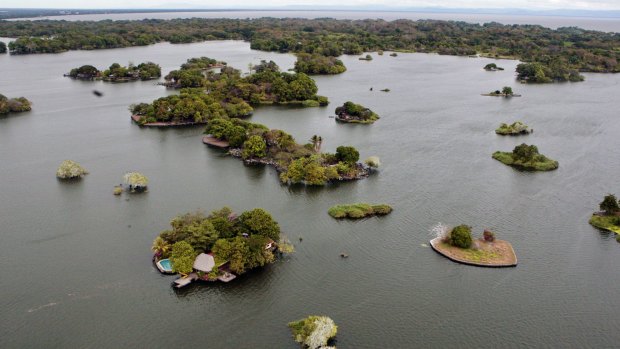
Isletas of Lake Granada.
Visitors have a choice of treks; we take an easy option, following a forest trail that eventually opens out onto a panoramic view across the lake. Along the way, we spot howler monkeys, hummingbirds and even a sloth, as well as huge butterflies and tiny orchids that peep out from among the moss-covered trees and the verdant heliconias.
One unexpected upside of our Mombacho hike is that I return to the lodge with a healthy appetite, which is precisely how you want to approach mealtimes at Jicaro. The lodge's atmosphere may be laidback, but the cuisine is sophisticated. At lunch we fill up on ceviche, garlic shrimp tacos and pulled chicken sandwiches; at dinner, watermelon salad with feta cheese and balsamic vinegar is followed by rum caramel chicken or grass-fed beef with chimichurri sauce.
Perhaps my favourite spot on the island, apart from the hammock hanging above my verandah, is the lakeside yoga deck. Every night I resolve to head down in the morning for a spot of yoga, but the slow pace at Jicaro lulls me into laziness. The most exercise I get most days is the swim out to the floating platform. Along the way I keep an eye out for the lake's most famous inhabitants. Sixteen separate species of angelfish make their home in the lake: according to some reports, their numbers are so numerous, they constitute half the biomass of the lake.
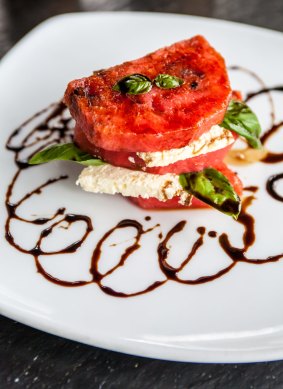
Food from Jicaro Eco Lodge.
Sadly, the angelfish remain elusive. So, fortunately, does a less friendly species. For many years, bull sharks were frequently spotted in this freshwater lake. It was assumed these predators had somehow become trapped in the lake. In recent decades, however, it has been discovered that the sharks actually enter the lake from the Caribbean via the rapids of the San Juan River, which they jump like migrating salmon. Sharks that can leap upstream – now that is a scary thought. Thankfully, numbers are low, and nary a fin disturbs me in my sea of tranquillity.
The writer travelled with the assistance of INTUR, the Nicaraguan Tourism Board, and Jicaro Ecolodge.
TRIP NOTES
MORE INFORMATION
GETTING THERE
Delta Airlines has a daily service from Atlanta to Managua in Nicaragua, as well as a weekly seasonal service between Los Angeles and Managua.
STAYING THERE
Jicaro Ecolodge, on Lake Nicaragua, makes a lovely base for exploring Granada and the surrounding area. Low season rates start at $550 per person twin share including all meals and non-alcoholic beverages. See www.jicarolodge.com.
EATING THERE
Granada's Calle La Calzada is lined with a range of quality restaurants. Perhaps the city's most appealing eatery, however, lies a few blocks back. The airy, verdant Garden Cafe offers tasty versions of local and European favourites. See www.gardencafegranada.com.
Sign up for the Traveller Deals newsletter
Get exclusive travel deals delivered straight to your inbox. Sign up now.